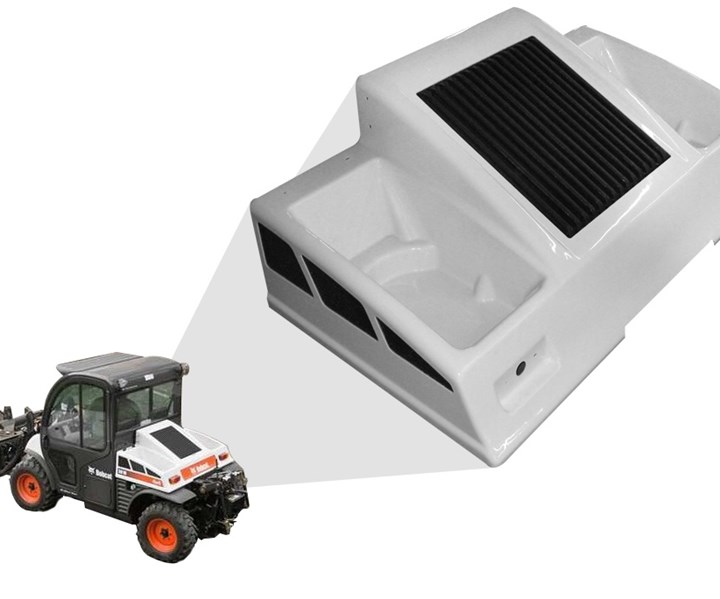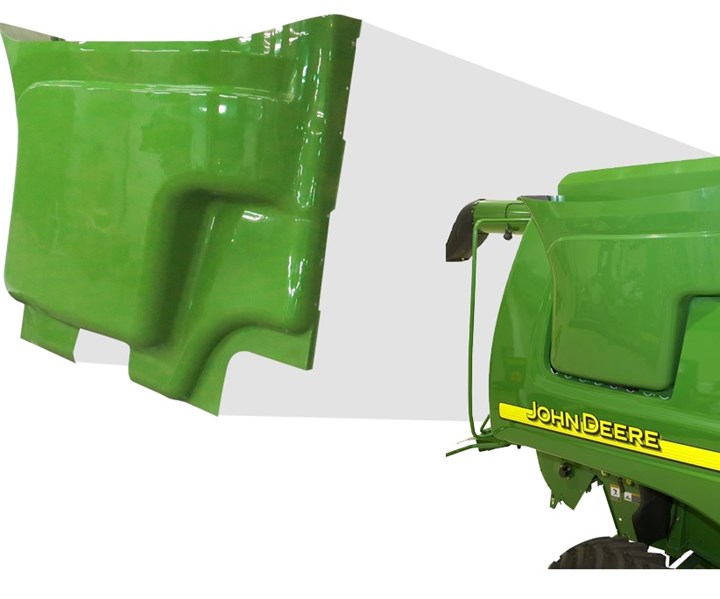CAMX 2019 exhibit preview: Plastics Unlimited
Plastics Unlimited is featuring its TEC (Tooless Engineered Composites) process.

Bobcat cover fabricated with Plastics Unlimited’s Tooless Engineered Compostes (TEC) process. Source | Plastics Unlimited
Plastics Unlimited (Preston, Iowa, U.S.) is featuring its TEC (Tooless Engineered Composites) process. TEC starts with a thermoformed plastic skin that is structurally reinforced by a composite material from the back side of the part. The benefits are a nonpainted Class A finish that can have a solid color with clear protection, metallic with clear top layer, chrome or designs such as carbon mesh, camouflage and more. There are also different textures that can be used for scratch and mar resistance, which the company says is not achievable with gel-coated parts.

John Deere tractor cover fabricated with Plastics Unlimited’s Tooless Engineered Composites (TEC) process. Source | Plastics Unlimited
The cost of TEC is said to make it good fit for low- to mid-volume production parts that require structure and a high-quality appearance. TEC reportedlyt also has fast turnaround because of the shorter cycle times. Each thermoformed shell is a new mold, which means that there is no waiting on parts to cure. Plastics Unlimited says it can produce a part every 2-3 minutes, compared to other composite processes that can take 1-8 hours. Further, the company says the decrease in total resin use results in lower weight and high glass ratios of finished goods. The shell can incorporate UV inhibitors to increase fade resistance and also is resistant to chips and cracks. TEC is also compatible with use of core materials, including foam, balsa wood, steel and aluminum. Cast foam cores allow three-dimensional structures, which may incorporate mounting hardware, hinges, etc. VOC emissions are minimal.
Related Content
-
TPI, UMaine, ORNL to leverage world’s largest polymer 3D printer for wind turbine tooling
Ingersoll Masterprint LFAM printer will be used to produce and demonstrate 100% recyclable tooling that could cut large composite blade development cycles and tooling costs by as much as 50%.
-
DLR study considers cast PA6 molds for in situ AFP composites
3D printed thermoplastic mold was analyzed as alternative to expensive, time-consuming metallic molds and for suitability in aerospace-grade composite structure fabrication.
-
VIDEO: Enhancing composite tooling with additive manufacturing
At JEC World 2025, CW editor-in-chief Scott Francis explored the latest advancements in composite tooling with Massivit and Sika.













